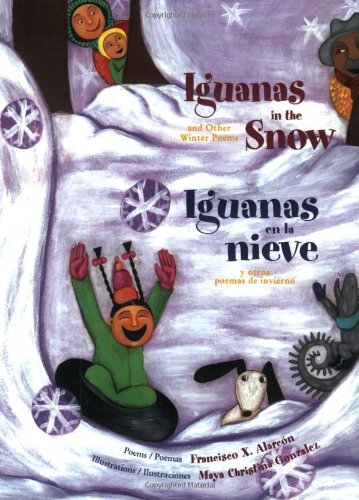FOR THE WINTER WEEKEND share this title with your child.
A Flower in the Snow is appropriate for preschool age children.

Summary:
A Flower in the Snow is a charming tale about a wonderful friendship between Luna and her polar bear friend Bear. One day, Bear finds a beautiful yellow flower and gives it to Luna as a sign of his friendship. When the flower dies and Luna is sad, Bear goes on a worldwide adventure to try and find a suitable replacement. Upon his return he realizes that his friendship with Luna, and hers with his, is the best treasure in all the world. Tracey Corderoy and Sophie Allsopp create a beautifully warm story in the serene winter landscape which will enthrall readers young and old.
Practice this Comprehension Strategy-Making Inferences:
A Flower in the Snow is a lovely book to practice making inferences. An inference is an educated guess. As you read, ask your reader what they think might happen next and why. Using context clues from the pictures and the text they should be able to make educated guesses about the story and its plot. Then as you progress, you can find out together if their inferences were correct. By actively participating in the story, your reader will have a deeper connection with the entire book sharing experience.
Do this with your child:
After you read A Flower in the Snow talk with your reader about different ways to show your friends that you care about them. Writing friends notes and drawing them pictures is a great way to do that. Ask your reader to draw a picture or write a note for their friends if they want.
If you're interested in sharing A Flower in the Snow with your child you can find it published by Sourcebooks Jabberwocky here.
A Flower in the Snow is a charming tale about a wonderful friendship between Luna and her polar bear friend Bear. One day, Bear finds a beautiful yellow flower and gives it to Luna as a sign of his friendship. When the flower dies and Luna is sad, Bear goes on a worldwide adventure to try and find a suitable replacement. Upon his return he realizes that his friendship with Luna, and hers with his, is the best treasure in all the world. Tracey Corderoy and Sophie Allsopp create a beautifully warm story in the serene winter landscape which will enthrall readers young and old.
A Flower in the Snow is a lovely book to practice making inferences. An inference is an educated guess. As you read, ask your reader what they think might happen next and why. Using context clues from the pictures and the text they should be able to make educated guesses about the story and its plot. Then as you progress, you can find out together if their inferences were correct. By actively participating in the story, your reader will have a deeper connection with the entire book sharing experience.
Do this with your child:
After you read A Flower in the Snow talk with your reader about different ways to show your friends that you care about them. Writing friends notes and drawing them pictures is a great way to do that. Ask your reader to draw a picture or write a note for their friends if they want.






